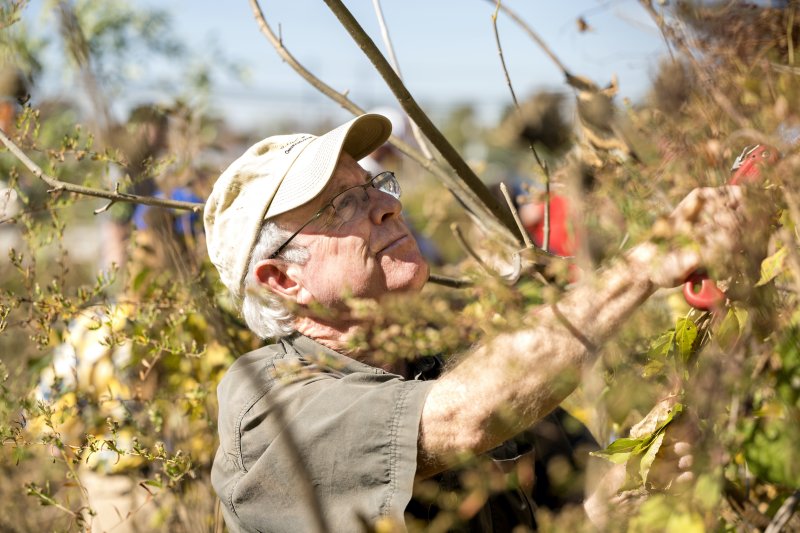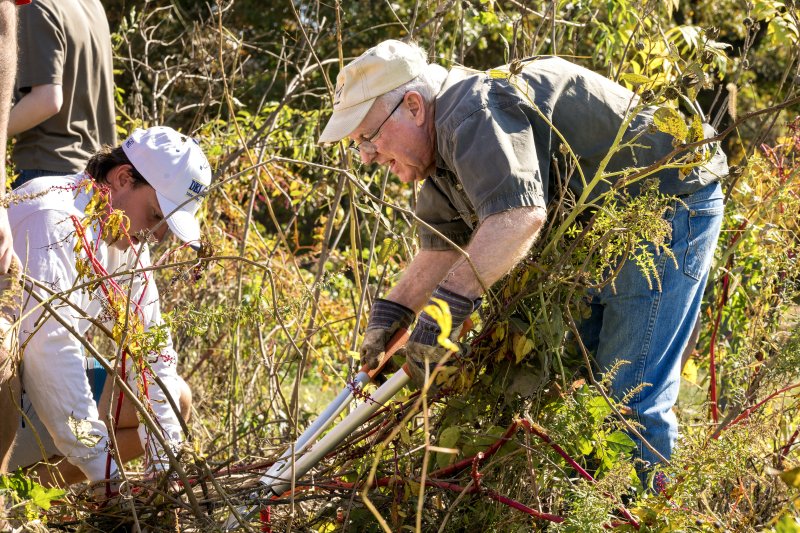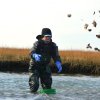Noted ecologist to focus on preserving natural space Sept. 8
Editor’s note: This column is a regular feature written by staff at the University of Delaware. It spotlights UD research at UD facilities in southern Delaware, and related events in beach towns and surrounding areas.
Known for its small but vibrant beach towns and fertile fields, Sussex County has 938 square miles of land that provides desirable places to live, farm and retire. People have flocked to the county, igniting a population boom over the last quarter of a century.
To keep up with population growth, county government has issued scores of new building permits, bringing in new developments, infrastructure and thousands of new homes.
But every decision about land use that brings in new houses and roads deals a blow to the natural environment, said Jill Hicks, Sussex Preservation Coalition president.
“We keep an eye on tree loss. We are losing anywhere between 1,000 to 3,000 acres of forest a year in Sussex County to development,” Hicks said. “That’s very concerning.”
The concern, Hicks said, stems from how trees benefit the environment. Trees help prevent stormwater runoff into Delaware’s Inland Bays. They provide habitat for wildlife. They breathe in carbon dioxide from the atmosphere and store carbon in their roots, leaves and soil, helping to mitigate climate change.
The Sussex Preservation Coalition will bring a heavy hitter to Lewes from 7 to 8:30 p.m., Monday, Sept. 8, at Cape Henlopen High School, to address the public about the importance of preserving space for the natural environment. Go to lp.constantcontactpages.com/ev/reg/tueuhzz for tickets.
Renowned ecologist Doug Tallamy, University of Delaware TA Baker Professor of Agriculture and Natural Resources, and a New York Times bestselling author, will address how what a person does in their own yard can make a difference in the natural world.
He has a simple trick: “Take your little piece of the Earth and redesign it in a way that supports local biodiversity.”
His initiative is called Homegrown National Park, which he co-founded in 2020. It involves planting native plants — species that were once typical to a region. This draws in beneficial insects that eat those plants or use them for habitat, and brings in animals that feed on those insects.
Sussex County has sandy soils, an environment Tallamy says pines thrive in. Properties closer to the ocean need plants that are salt tolerant, such as American holly, black cherry and bayberry.
For about the last two decades, Tallamy has informed people about the value of preserving the natural environment and its numerous, varied plants and animals. He touts the value of having a yard or a balcony filled with native plants, rather than a lawn that just looks pretty.
“There are four ecological goals that every property has,” Tallamy said. “Support pollinators. Support the food web — have plants that are going to pass on part of their energy so that you actually have animals in your ecosystem. Sequester carbon to help climate change. And manage the watershed in which it lies. Lawn does none of these things.”
Part of preserving space for nature, Tallamy said, is not hiring someone to manage a property for mosquitos. Mosquito fogging does not actually control mosquitos, but it does kill monarch butterflies and bees, insects that pollinate flowers, and the natural enemies that keep pests in check. It’s a snowball effect on nature.
“Nature provides our life support,” Tallamy said. “Nature moderates our weather, it provides our oxygen, it provides our food. We cannot live without it.”
Hicks hopes Tallamy’s message resonates with the public. But, she said, she hopes people not only hear his message, but also take action.
“I hope people take up his knowledge about how important the ecosystem is to us,” Hicks said. “How if we all do our part, we could have a big impact!”
To learn more, go to homegrownnationalpark.org.























































